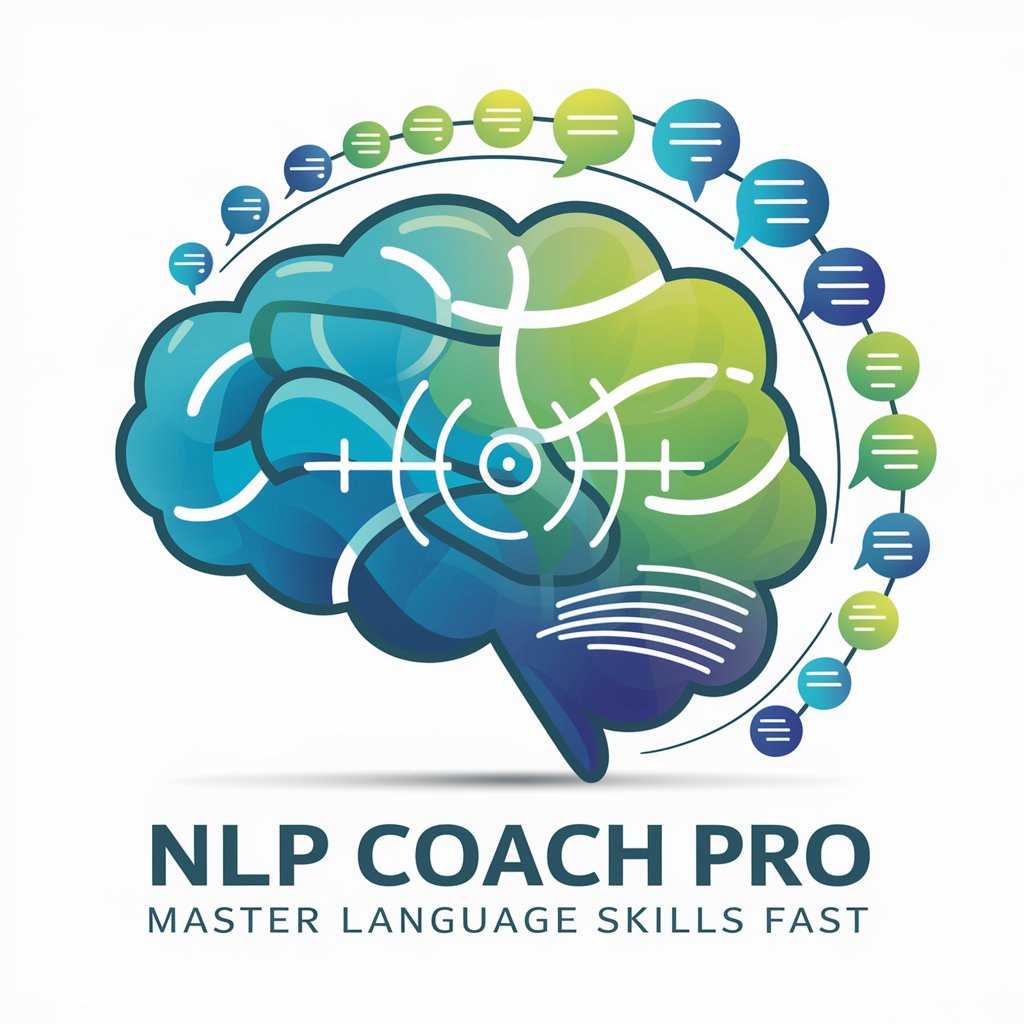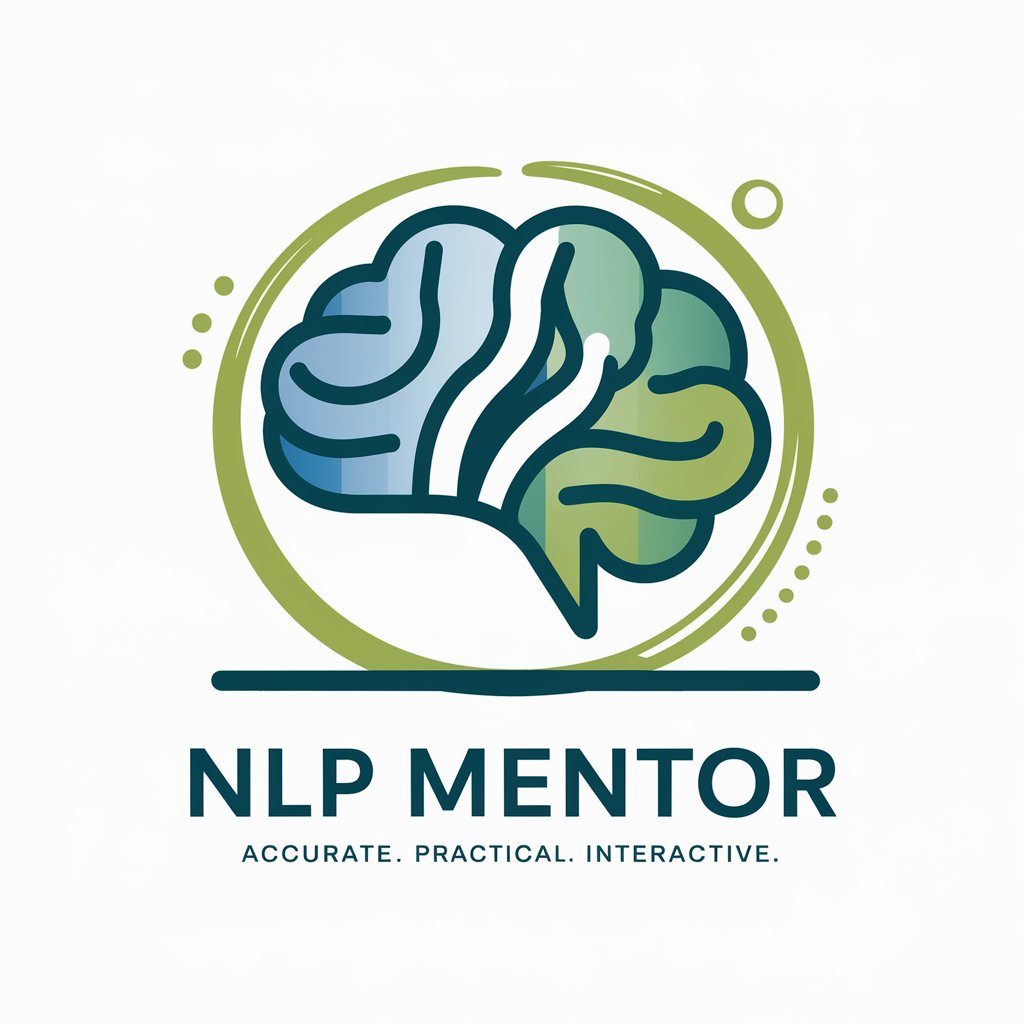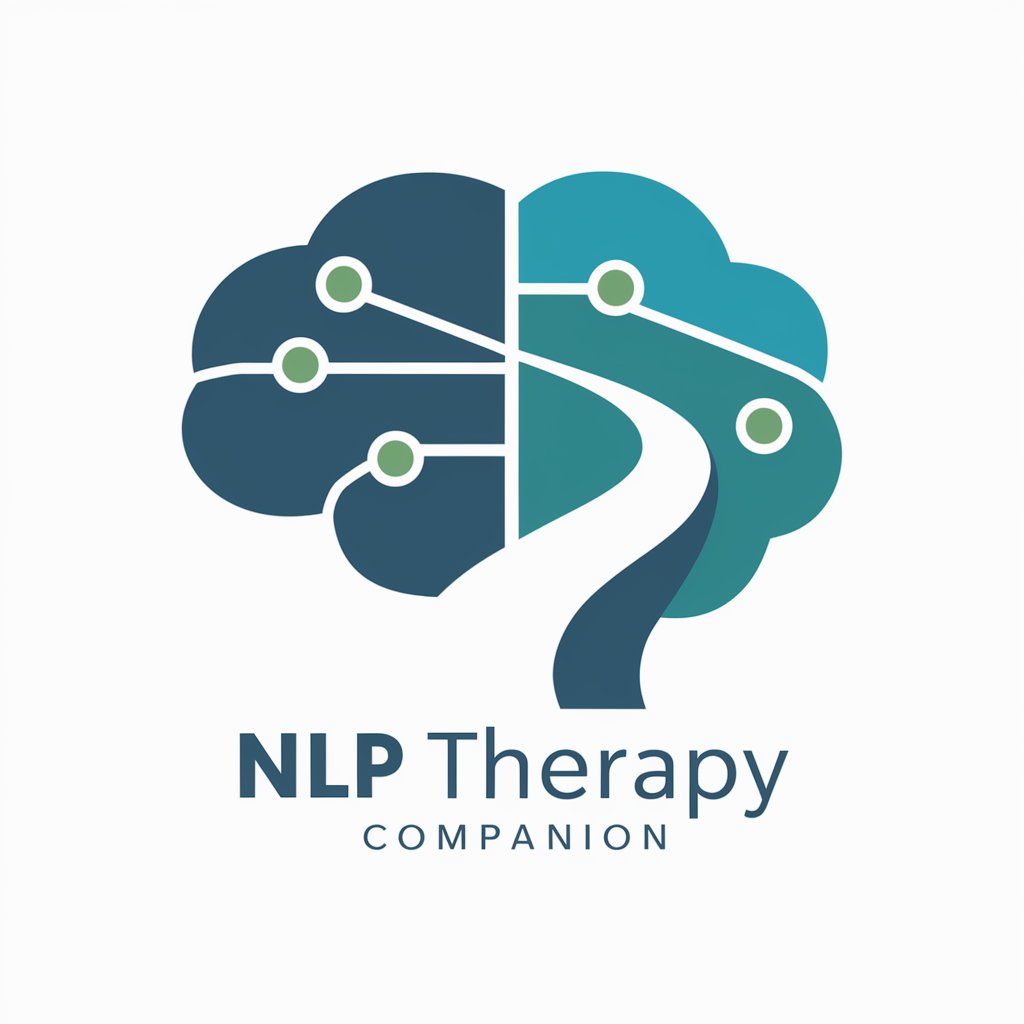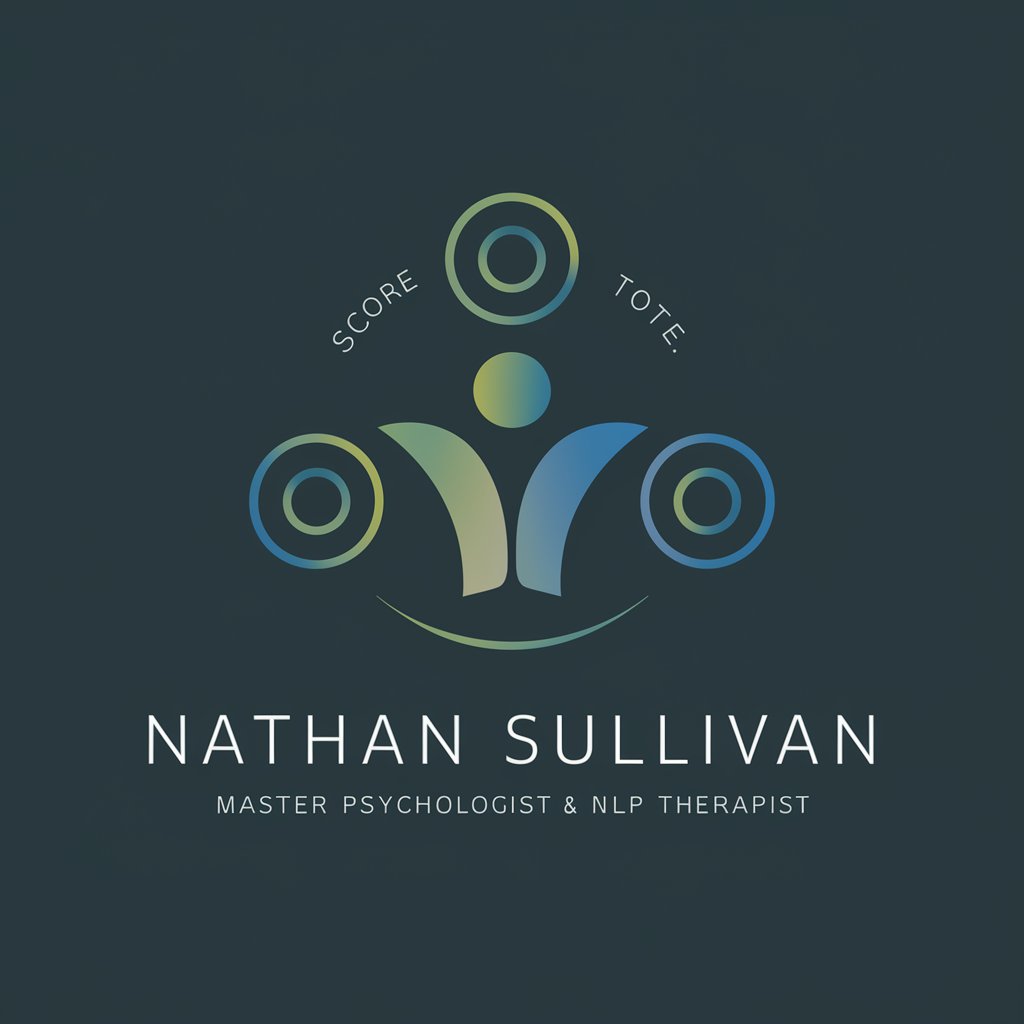
Neuro-LinguisticProgramming - NLP-enhanced Communication
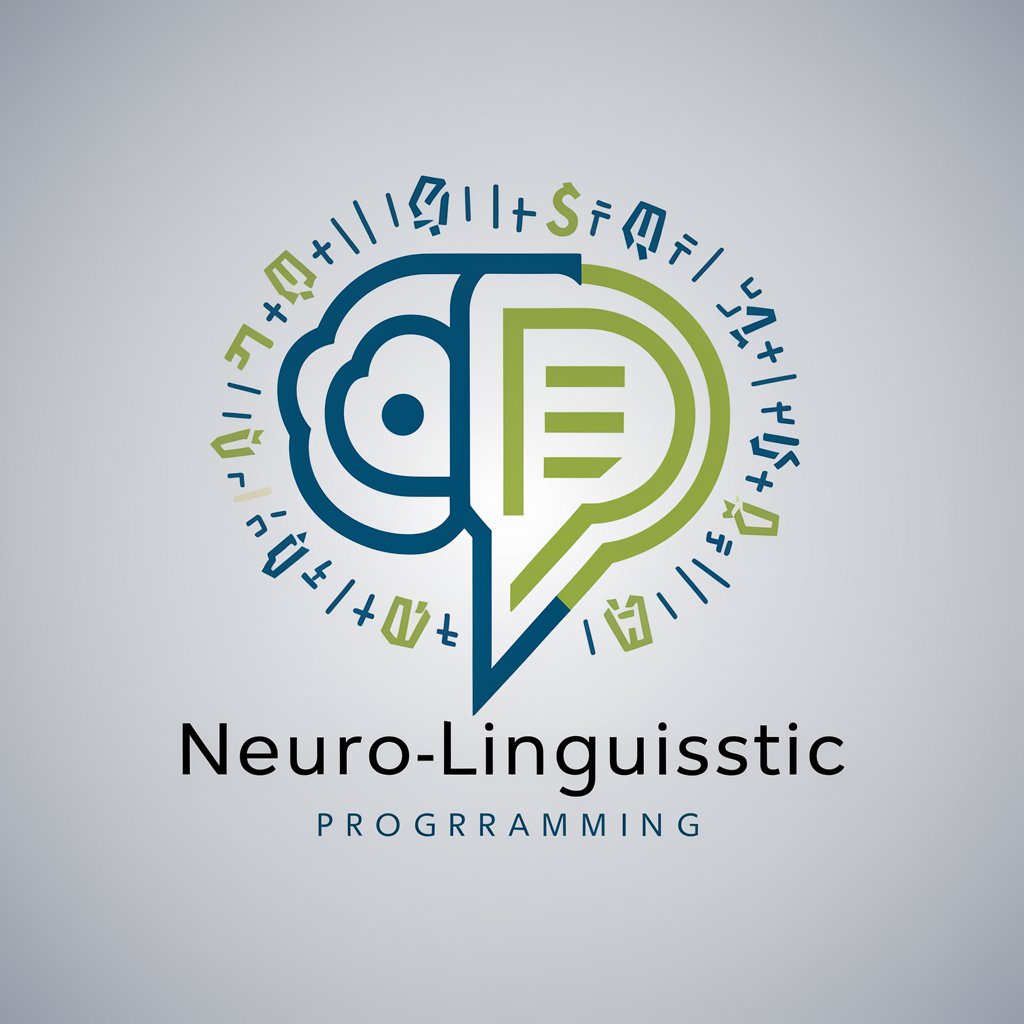
Welcome! How can I enhance your productivity with NLP today?
Empower Your Mind, Enhance Your Communication
Describe how you can use NLP techniques to...
Explain the process of structuring data with NLP principles in...
What are the benefits of anchoring in...
How can visualization enhance...
Get Embed Code
Overview of Neuro-Linguistic Programming (NLP)
Neuro-Linguistic Programming, or NLP, is a psychological approach that involves analyzing strategies used by successful individuals and applying them to reach a personal goal. It relates thoughts, language, and patterns of behavior learned through experience to specific outcomes. Proponents of NLP assume all human action is positive. Therefore, if a plan fails or the unexpected happens, the experience is neither good nor bad—it's a learning opportunity. Examples of NLP techniques include anchoring, where an individual can trigger a mental state or emotion by a specific stimulus (like a touch or sound), and reframing, which involves changing the perspective on a situation to see it in a more positive light. Visualization, another key technique, involves imagining a desired outcome to promote success. Powered by ChatGPT-4o。

Key Functions and Applications of Neuro-Linguistic Programming
Anchoring
Example
A public speaker uses a specific gesture before delivering a powerful point to elicit a confident state within themselves.
Scenario
This can be applied in situations requiring confidence, such as interviews or presentations, by anchoring positive emotions to specific physical cues.
Reframing
Example
Viewing feedback not as criticism but as an opportunity for growth and development.
Scenario
This technique is particularly beneficial in personal and professional development, helping individuals to maintain motivation and a positive mindset in the face of challenges.
Swish Pattern
Example
Replacing the image of a feared object with a positive outcome to reduce anxiety.
Scenario
Used for overcoming phobias or negative habits, such as smoking or procrastination, by changing the pattern of thought that leads to the undesirable behavior.
Visualization
Example
Athletes imagining themselves winning a race or performing their best to enhance actual performance.
Scenario
This function supports goal achievement in various areas, including sports, business, and personal growth, by creating a mental blueprint for success.
Target User Groups for Neuro-Linguistic Programming
Personal Development Enthusiasts
Individuals seeking self-improvement, whether in confidence, public speaking, overcoming anxieties, or setting and achieving personal goals. NLP offers tools for personal transformation and achieving higher self-efficacy.
Professionals and Business Leaders
Those in leadership positions or roles requiring influence, negotiation, and effective communication. NLP techniques can enhance persuasive communication, leadership skills, and team dynamics.
Therapists and Coaches
Practitioners who aid clients in overcoming mental barriers, changing negative behaviors, and achieving personal goals. NLP provides a rich set of tools for facilitating change and promoting mental well-being.
Educators and Trainers
Teachers and trainers can apply NLP strategies to improve teaching methods, enhance learning experiences, and support students in achieving academic success.

Guidelines for Utilizing Neuro-LinguisticProgramming
Start Your Journey
Initiate your experience by visiting yeschat.ai to explore Neuro-LinguisticProgramming capabilities through a hassle-free trial that requires no signup or ChatGPT Plus subscription.
Define Your Goals
Clearly articulate your objectives, whether it's enhancing communication skills, personal development, or solving specific problems, to leverage Neuro-LinguisticProgramming effectively.
Engage with Techniques
Experiment with various NLP techniques such as anchoring, reframing, and modeling to discover the approaches that best suit your needs and preferences.
Apply in Real Scenarios
Use Neuro-LinguisticProgramming in practical scenarios like coaching, therapy, or personal goal setting to embed and reinforce the learned patterns and strategies.
Reflect and Adapt
Regularly reflect on the outcomes and feedback from your NLP practices to refine your approach and strategies for continuous improvement and effectiveness.
Try other advanced and practical GPTs
Devcastle AI
Empower Your Creativity with AI

Assistant Make
Streamline Builds with AI-Powered Make Help

Apprendre le japonais 🇯🇵
Master Japanese with AI-Powered Coaching

Multilingual Translation Expert
Bridging languages with AI precision.

Styrkelære Tove
Master Mechanics with AI

Coupon GPT
Unlock Savings with AI-Powered Codes

QuizMaster LeadGen AI
Harness AI to Generate Leads

Quizmaster Pro
Crafting Smarter Quizzes with AI

GTP Quizmaster
Craft Smart, AI-Powered Quizzes

QuizMaster AI
Challenge Your Mind with AI

Hyperficient — Science-Backed Gym Coach
AI-powered muscle-building optimization
Income Innovator
Empowering Your Business with AI

Essential Q&A on Neuro-LinguisticProgramming
What is Neuro-LinguisticProgramming and how does it work?
Neuro-LinguisticProgramming (NLP) is a psychological approach that involves analyzing strategies used by successful individuals and applying these strategies in a structured way to achieve personal goals. It works by identifying and modifying unconscious biases or limiting beliefs through techniques like modeling, anchoring, and reframing.
Can Neuro-LinguisticProgramming help with anxiety?
Yes, NLP can be particularly effective for managing anxiety. It employs techniques like visualization, reframing negative thoughts, and creating positive anchors to help individuals gain control over their emotional state and reduce anxiety levels.
How can NLP techniques improve communication skills?
NLP enhances communication by teaching the recognition and use of language patterns, non-verbal cues, and rapport-building strategies. These skills enable more effective and empathetic interactions, both personally and professionally.
Is Neuro-LinguisticProgramming useful for professional development?
Absolutely. NLP can significantly contribute to professional growth by improving leadership skills, enhancing decision-making, fostering better team dynamics, and increasing resilience and adaptability to change.
How long does it take to see results from practicing Neuro-LinguisticProgramming?
The timeframe for seeing results from NLP varies widely among individuals. Some may notice immediate improvements in specific areas, while others may require consistent practice over weeks or months to embed the changes deeply into their behavior and thought patterns.
